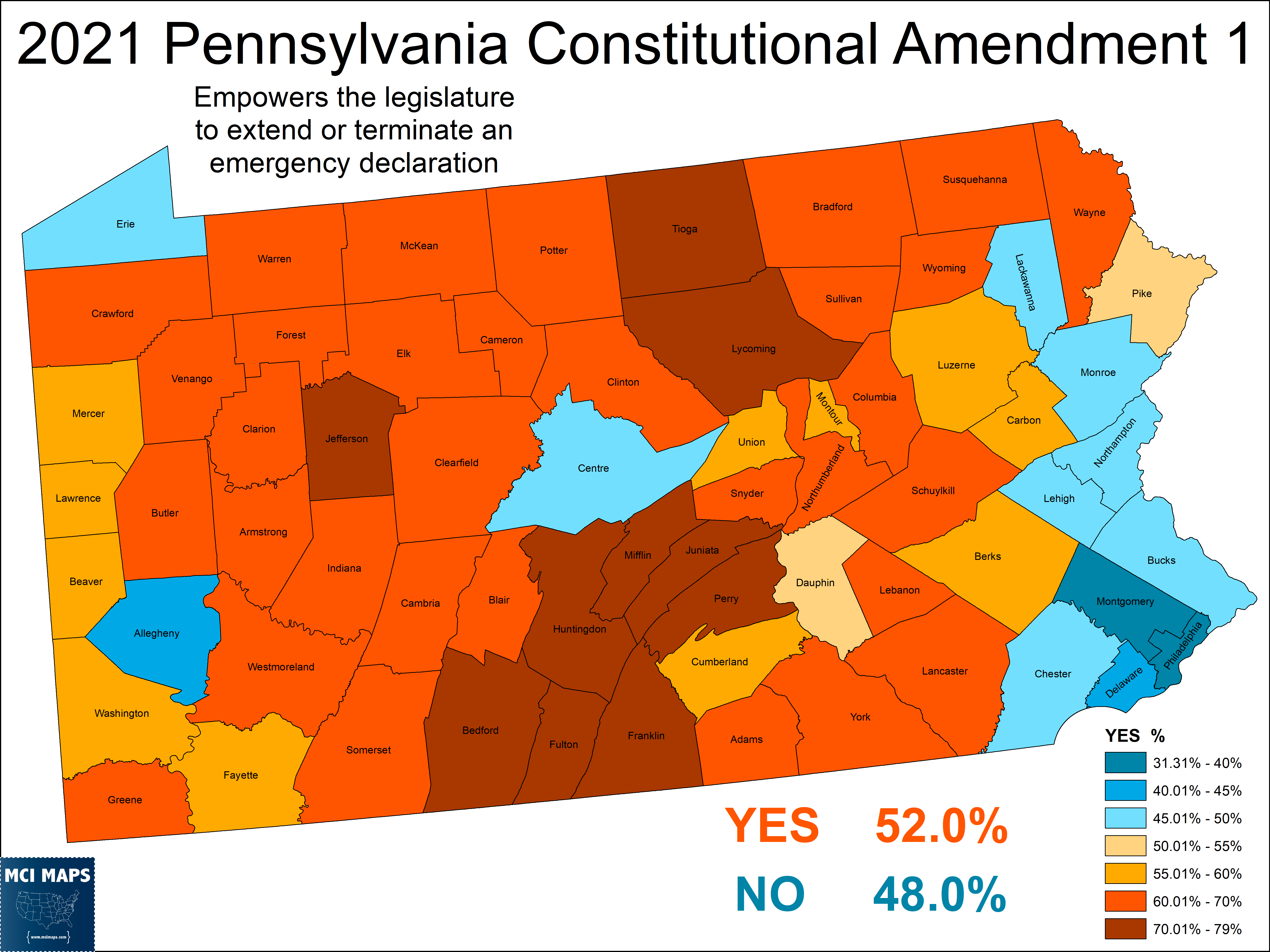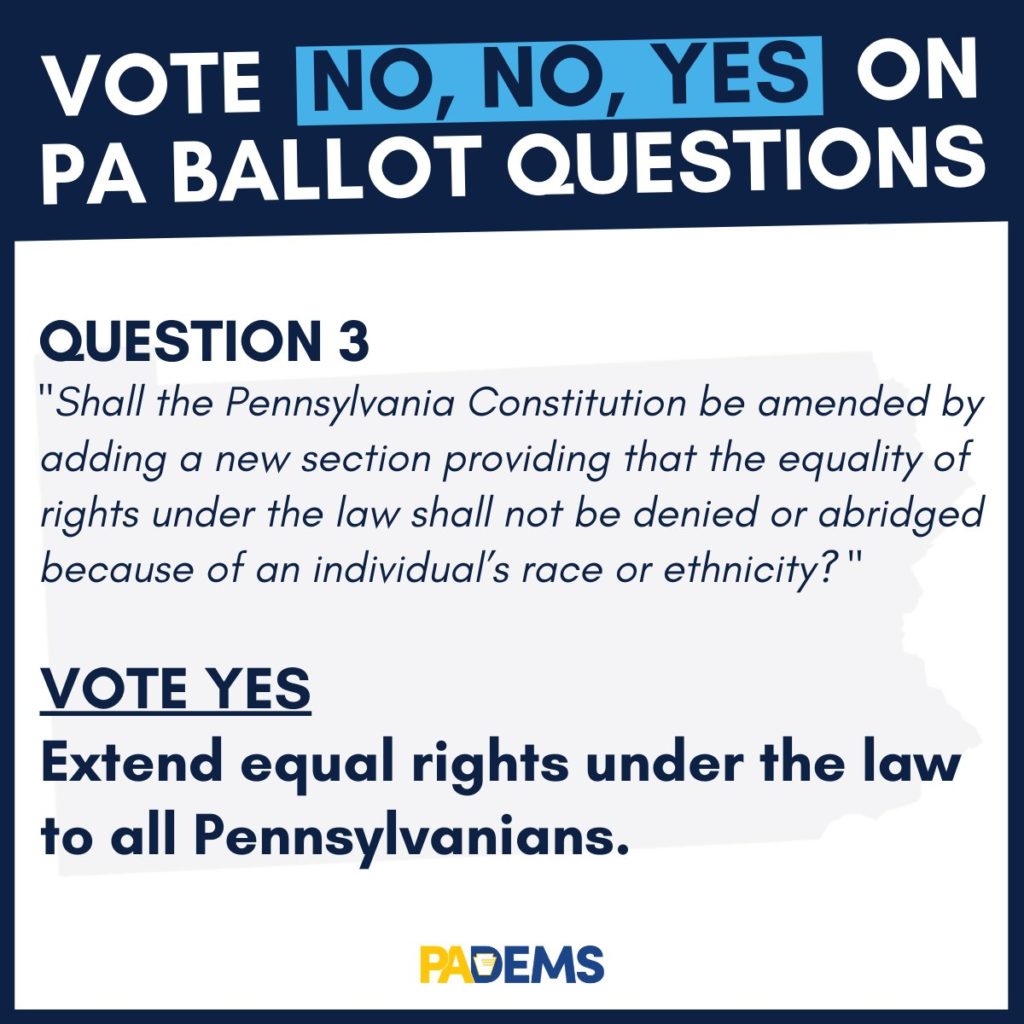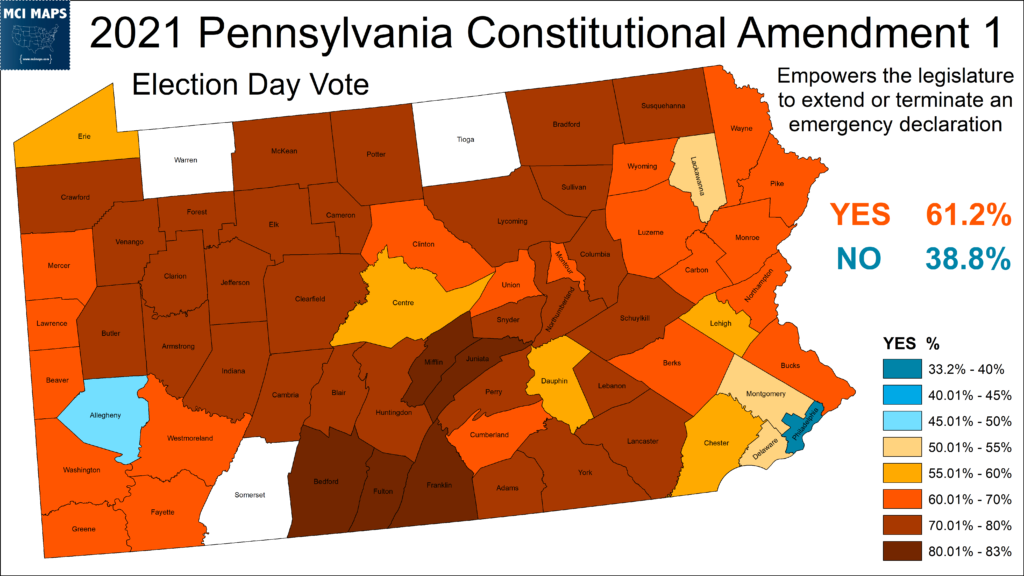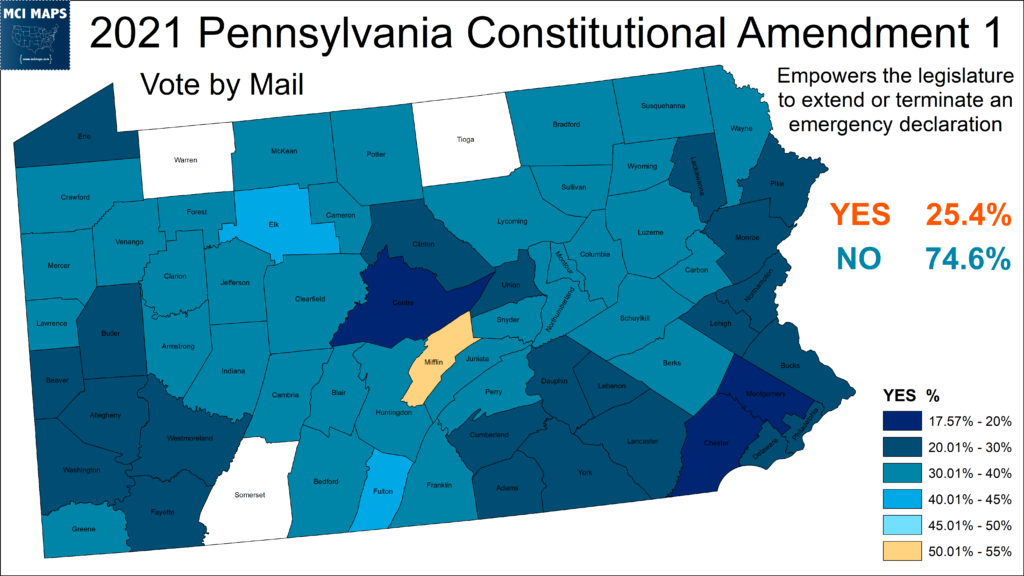In May, Pennsylvania voters passed two ballot measures that limited the power of the Governor in emergencies. The measures, pushed by the Republican legislature, were part of a year-long fight with Democratic Governor Tom Wolf over state powers during the COVID-19 pandemic. The passage of both measures are a victory for the legislature. The question is, why did the measures pass and what does it mean for 2022?
The Amendments and PA Politics
Pennsylvania continues its long trend of being a close state. After narrowly picking Donald Trump in 2016, Biden went on to flip the state for Democrats in 2020; securing a narrow 1.2% win. This followed the successful re-election of Democrat Governor Wolf in 2018. Republicans, however, continue to control the gerrymandered legislature.
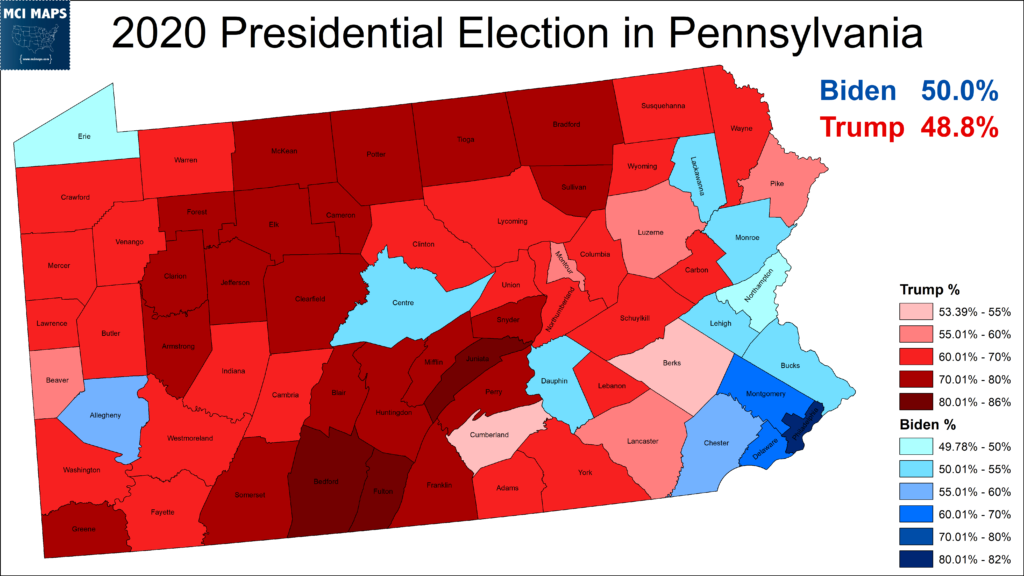
As the COVID-19 pandemic stressed state and local governments, a feud between the legislature and Governor Wolf erupted. Wolf declared a state of emergency and issued orders related to mask mandates, lockdowns, and other measures aimed to slow the spread of the virus. The legislature quickly came into opposition with Wolf, following the hard-right viewpoint of “freedom” meaning more than “human lives.” The legislature tried to rescind Wolf’s emergency declaration in June of 2020. However, the Pennsylvania Supreme Court ruled that Wolf had the ability to veto such a move, which he did.
In response, the legislature passed measures to appear on the May ballot; the same day local governments held party primaries. Amendments 1 and 2 were both pushed by the legislature as a check on the Governor’s power.
Amendment One’s ballot summary read
Shall the Pennsylvania Constitution be amended to change existing law and increase the power of the General Assembly to unilaterally terminate or extend a disaster emergency declaration—and the powers of Commonwealth agencies to address the disaster regardless of its severity pursuant to that declaration—through passing a concurrent resolution by simple majority, thereby removing the existing check and balance of presenting a resolution to the Governor for approval or disapproval?
Amendment One’s ballot summary read
Shall the Pennsylvania Constitution be amended to change existing law so that: a disaster emergency declaration will expire automatically after 21 days, regardless of the severity of the emergency, unless the General Assembly takes action to extend the disaster emergency; the Governor may not declare a new disaster emergency to respond to the dangers facing the Commonwealth unless the General Assembly passes a concurrent resolution; the General Assembly enacts new laws for disaster management?
The Campaign
The campaign didn’t generate a tremendous amount of attention; and in many counties and cities took a back seat to local primaries. Philadelphia county, for example, was in the mid of a huge democratic primary for District Attorney. Pittsburgh, meanwhile, saw its incumbent Mayor ousted in a city-wide primary.
Pennsylvania Democrats made their opposition to the measures clear. Governor Wolf strongly condemned the measures. Democrats adopted a “NO, NO, YES” tag-line: encouraging voters to reject amendments 1 and 2, but vote yes on a 3rd amendment, which banned discrimination. Amendment 3 was added to the May ballot after Democratic Senate Vincent Hughes got it added to the legislation putting measures 1 & 2 before the voters.
Republicans campaigned on the measures being a rebuke of COVID restrictions and GOP-aligned candidates in the May primaries supported the proposals.
Money-wise, the measures didn’t generate big spending. As far as I can tell, no formal committee’s were set up to raise or spend money. The most notable third-party expenditure I could find was $150,000 from American’s for Prosperity; who backed the amendments.
The Results
As the votes came in on election night, both measures eventually took a modest lead in the vote count that they would never lose. In the end, both measures passed by just around 4%.


Both measures failed in Democratic areas while passing in Republican strongholds. The measures had modest differences in support. Overall both were tied together as a legislature vs governor fight. An argument was made by a handful of folks that measure 2 was overkill – even recommending a YES on 1, NO on 2 option – but overall most voters were NO-NO or YES-YES.
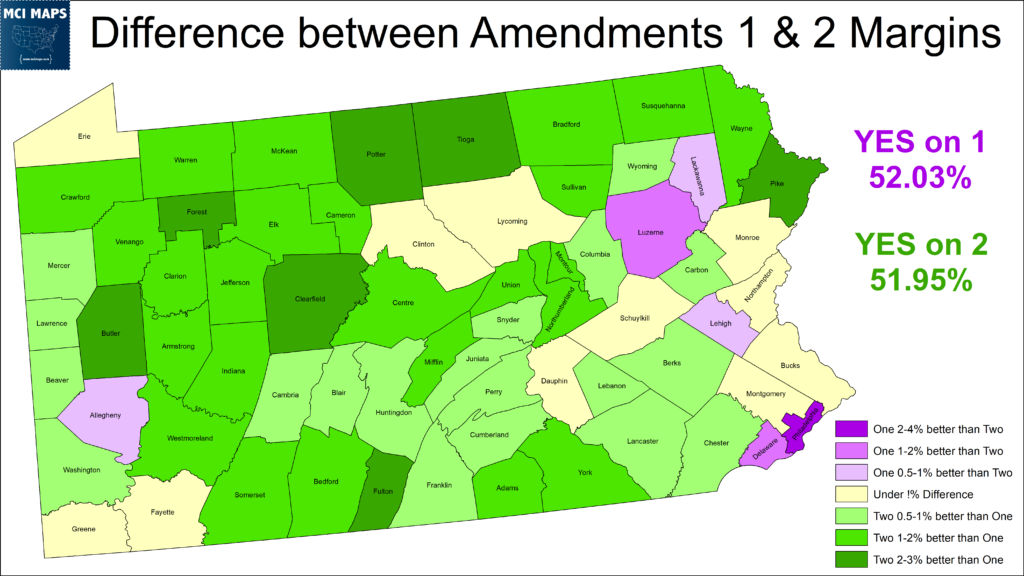
Philadelphia county is a weird story. It appears that 20,000 fewer votes were cast in the Amendment 1 contest than in Amendment 2. You can see the difference below.
Both measures failed, getting near-identical YES totals, but Amendment 1 has 20,000 fewer NO votes. Philadelphia county is the only county with such a notable difference in ballots cast for Amendment 1 vs Amendment 2.

Looking at ward-level data, there is some differences in the gap in votes, but all appear to have gaps. The question then becomes if ballot position effected folks missing Amendment 1. Sample ballots show the positions depended on races on the ballot, and its possible Amendment 1 could have been shoved in a corner in ballots and glossed over. This is a story familiar with voters in Florida in 2018 – when Broward’s ballot design resulted in a notable undervote in the US Senate race. It is also possible that final certification may reveal an error in the reporting.
Philadelphia aside, it wouldn’t change the outcome of Amendment 1. So the question is, why did a state that backed Biden and Wolf vote for these GOP-backed measures?
Analyzing the Results
The counties that rejected amendments 1 and 2 almost perfectly aligned with those that voted for Joe Biden in 2020. The only Biden-YES county was Dauphin, which includes the capital of Harrisburg. However, margins differ across the state. The NO campaign actually outperformed across most of the rural-red portions of the state. However, Biden outran the NO campaign across the southeast suburbs that fueled the 2020 victory.


The southeast Philadelphia suburbs were a critical reason for Biden’s success in the state. The area is part of the Northeast Corridor of suburbs that fueled massive Democratic gains in the Trump era.
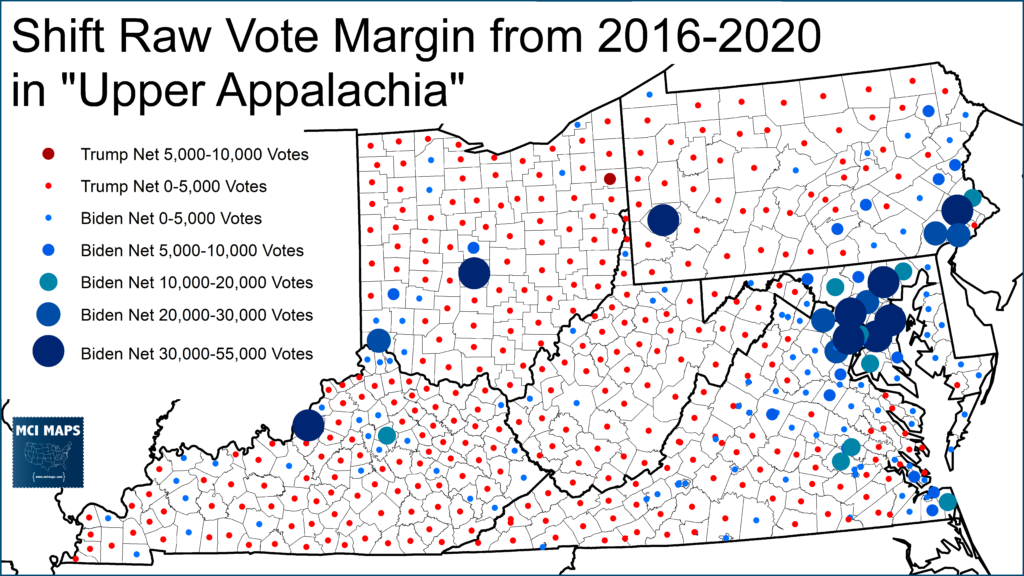
These counties, while solidly Biden and moving more Democratic locally, still are not solid Democratic bases in many ways. The swing of some soft-Biden voters (who resented Trump’s style) who still wanted a bigger “check” on the power of the Governor is not a hard thing to imagine.
Another factor also in play is turnout. The May ballot saw far weaker turnout than the Presidential race did or the 2022 Gubernatorial race will. Overall, 32% of Presidential voters showed up for the 2021 primaries. The share was much lower in the southeast corridor. The county turnout data leans decidedly Republican.
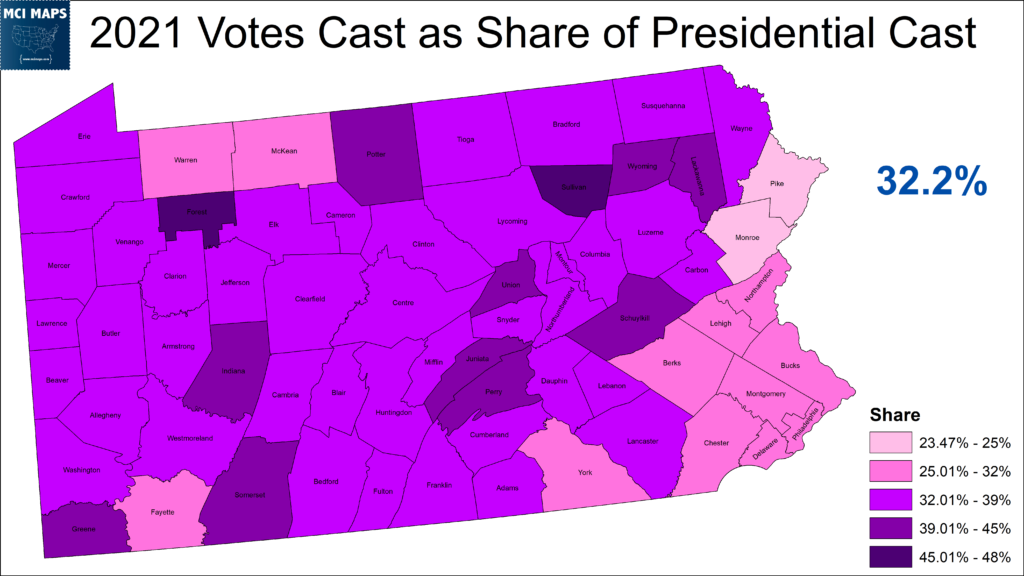
This turnout disparity can be seen in the votes cast for the Supreme Court Primaries. Democrats officially had no opposition in their primary, while the GOP had contests. However, since the lone Democratic candidate was on the ballot, we can still compare votes cast (the lone Democrat vs the combined GOP candidate votes). The results are a GOP advantage of 1%.

Now, this breakdown is partially effected by partisan registration (as party members cannot vote for the other side’s voters). For example, even though Fayette County is conservative, it has more registered Democrats and hence had more votes for the Democratic primary for Supreme Court than GOP.
Even more voters cast ballots for the ballot measures (namely non-partisan voters who couldn’t vote in the Supreme Court primaries) – but the GOP advantage in turnout appears pretty clear.
Lingering COVID/Voting Polarization
During the 2020 elections, voting by mail became highly polarized thanks to Trump’s attacks on the practice. Trump insisted, falsely, that vote by mail wasn’t secure. Democrats, adhering to COVID lockdown orders more, embraced voting by mail while GOP voters shunned it. As a result, the Pennsylvania Presidential election saw a GOP-strong election day and DEM-strong vote-by-mail.
That polarization continued here. The amendments dominated on election day, but overwhelmingly lost the vote-by-mail fight.
Overall, Democrats outvoted Republicans by an almost 4-1 margin with vote-by-mail. However, election day gave the amendments the numbers they needed. Absentees were a smaller share of the vote this election than in 2020. In November, absentees were nearly 38% of the votes cast. This time they were just 35%.
Amendment 3
As previously mentioned, a third measure was put on the ballot by the legislature. This measure codified that racial discrimination was illegal in the state. In terms of practical effects, its unlikely much will happen. This merely put the Pennsylvania constitution in line with federal laws, the 14th amendments, and Supreme Court cases. It generated no organized opposition – but still managed to fail in three counties.

Random online rantings from TOTALLY not-racist guys (some of whom just happen to have green frogs as the avatars) said that the measure would mandate affirmative action and hence discriminate against white people. I imagine that general paranoia is what drove most opposition. Those folks aside, the measure did pass overwhelmingly.
The election day vs vote-by-mail effects were found in this vote as well.
Clarion managed to escape the indignity of being one of the few NO counties thanks to its mail voting.
Looking Ahead to 2022
Republicans have claimed victory for the referendums, and there is no denying this is not what the Pennsylvania Democrats wanted. However, the close breakdown of the referendums, coupled with the quiet campaign and turnout disparities, mean these can’t be super predictive for next year. By November of 2022, COVID will (hopefully) be a distant memory. I think the national mood would drive the Pennsylvania midterms – and the COVID lockdown debates will be memory largely forgotten by swing voters. Had the results been more overwhelming, or turnout looked more even, there might be a bigger “danger” sign for democrats. If anything, the results a reminder of Democrats needing to show up – as they clearly stayed home more in the southeast.
Democratic-aligned voters need to show up next year to win statewide in Pennsylvania. Hell, before that, they better be sure to show up in the Supreme Court general election as well.

